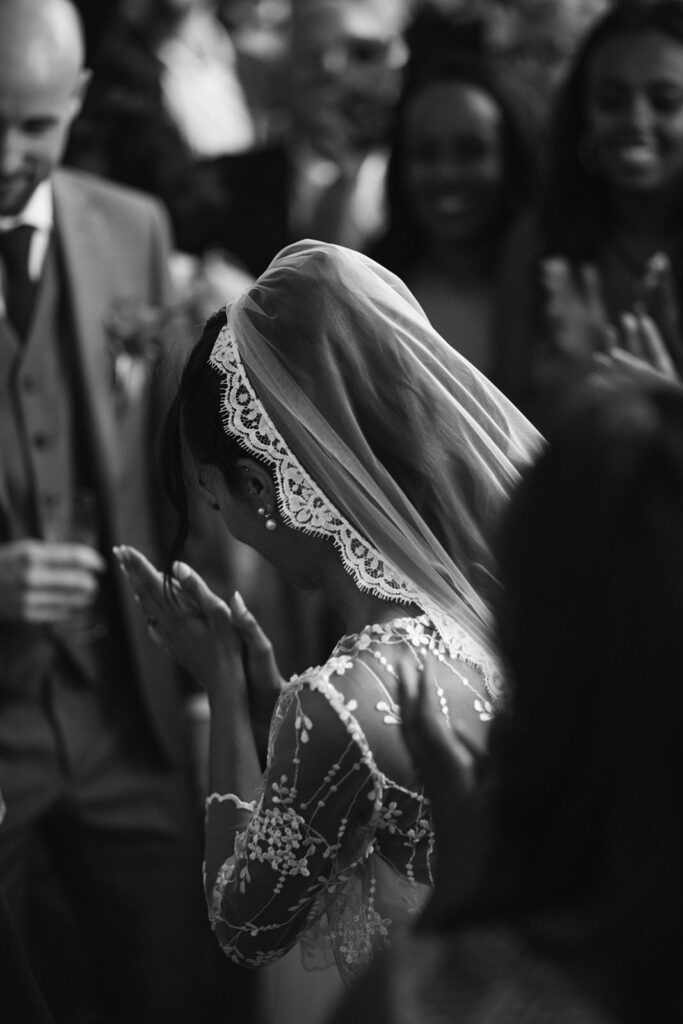Multicultural Wedding: Creating Harmony Between Traditions in a Stunning Setting.
Make Your Wedding a True Tribute to Your Origins While Enjoying Seamless Planning
Embracing Each Other’s Cultures
A multicultural wedding is more than just a union; it celebrates two unique stories merging to create a new family legacy. Highlighting the traditions of both cultures enriches your wedding and reflects the uniqueness of your union. This approach enhances various aspects of your celebration:
A Unique and Personalized Design
Visual elements from different origins — patterns, colors, fabrics — can be creatively combined to create an extraordinary yet refined atmosphere. Imagine a palette that blends vibrant hues with soft and elegant tones. The result? An original and harmonious aesthetic, a subtle balance between tradition and modernity.
An Unforgettable Experience for Guests
Showcasing your traditions turns your wedding into a cultural journey. Each family feels represented and valued, strengthening familial bonds. For guests less familiar with one of the cultures, it’s an opportunity to explore it through customs, flavors, and music, fostering a deeper connection with you and your families.
A Deep Spiritual Dimension
Uniting spiritual or symbolic customs from both cultures amplifies the emotional depth of your commitment. It’s a chance to demonstrate respect and appreciation for each other’s heritage. In today’s world, it’s no longer about choosing between traditions but bringing them together, creating a unique harmony centered around the universal value shared by all cultures: love.


© Alison Doff © Alchemia wedding
Five Steps to Perfect Cultural Harmony
Planning a multicultural wedding may seem challenging, but with the right approach, it’s possible to overcome every obstacle and craft a harmonious celebration.
1. How to Satisfy Diverse Culinary Tastes?
In one culture, bold and spicy flavors are key, while the other prefers subtler, more refined dishes.
Our Wedding Planner’s Solution: Collaborate with a skilled caterer who can craft a dual menu. For instance, offer an international appetizer buffet followed by a main course that blends influences, like a fillet of fish with an exotic sauce paired with a classic side dish.
2. How to Blend Rituals in the Ceremony?
One partner wishes for a religious ceremony, while the other prefers a secular approach.
Our Wedding Planner’s Solution: Design a hybrid ceremony that alternates key elements from each tradition. For example, begin with a religious ritual followed by personalized vows to add a universal touch.
3. How to Manage Different Timelines for Festivities?
In one culture, dancing starts during dinner and continues late into the night, while the other reserves dancing until after dessert.
Our Wedding Planner’s Solution: Include subtle musical entertainment during dinner, followed by a spectacular first dance to kick off the party. You can also arrange a festive cocktail hour before dinner with moments dedicated to dancing, ensuring guests enjoy a joyful atmosphere from the start. This creates a seamless transition and meets everyone’s expectations.
4. How to Combine Two Aesthetic Styles?
One culture celebrates vibrant colors and exuberance, while the other emphasizes simplicity and elegance.
Our Wedding Planner’s Solution: Imagine a design incorporating refined materials and shapes, featuring soft tones accentuated with subtle pops of vibrant color. Typical patterns from one culture can be adapted to harmonize with an elegant overall palette, creating a cohesive and beautiful ambiance.
5. How to Engage All Guests in Traditions?
One culture includes participatory rituals, while the other lacks similar activities.
Our Wedding Planner’s Solution: Host a pre-wedding event dedicated to each family’s customs. This allows guests to discover and appreciate these traditions in a festive and relaxed setting.
With meticulous planning and a tailored approach, your multicultural wedding will become an authentic and harmonious celebration, leaving cherished memories for you and your loved ones.


